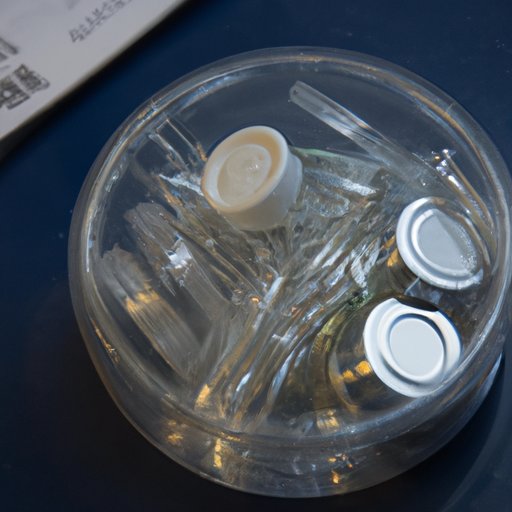
Proper Disposal of Sharps Containers: Protecting the Environment and Public Health
Sharps containers are commonly used for the safe disposal of medical materials such as needles, syringes, and lancets. However, improper disposal of sharps containers can cause environmental damage and pose serious health risks to individuals handling them. This article aims to provide an informative guide on safe and effective sharps container disposal through step-by-step instructions, environmental considerations, health risks, disposal options, and expert input from healthcare professionals.
Step-by-Step Guide to Disposing of Sharps Containers
Sharps container disposal requires proper handling and disposal techniques to prevent injury and spread of infection. It is important to dispose of sharps containers in accordance with local regulations and guidelines. Here are the steps to take when disposing of sharps containers:
- Never dispose of sharps containers in the trash or recycling bin. Contact your local health department for disposal guidelines and recommendations in your area.
- When the container is full, ensure safe handling by wearing gloves and safety glasses before removing the sharps from the container.
- Seal the container tightly with the provided lid and ensure that it is securely in place.
- Label the container clearly and appropriately, including the date of closure.
- Dispose of the container according to local guidelines, such as at a designated drop-off center or approved medical waste facility.
Environmental Impact of Improper Sharps Disposal
Improper sharps disposal has significant consequences for the environment. When sharps are discarded into landfills, they can break and puncture trash bags, leading to potential health hazards to sanitation workers. Additionally, sharps can contaminate soil, water, and air if not disposed of properly. To prevent these negative impacts, it is essential to dispose of sharps containers responsibly.
Awareness of Potential Health Risks
Improper disposal of sharps containers poses potential health risks to both the public and healthcare professionals. Injuries from needle sticks and exposure to infectious materials such as blood-borne pathogens can pose serious health risks such as Hepatitis B and C and HIV/AIDS. Proper sharps container disposal is crucial to reducing these risks as well as protecting public health.
Comparison of Different Disposal Options
There are various options for disposing of sharps containers, including at-home disposal, mail-back programs, and local drop-off centers. It is important to be aware of the pros and cons of each disposal method to choose the one that best suits your needs. Here are the most common sharps container disposal options:
- Local Drop-Off Centers: Many local cities have designated drop-off centers for sharps container disposal. These centers are often located at hospitals, pharmacies, or local health departments.
- Mail-Back Programs: Mail-back programs provide an easy way to dispose of sharps containers. These programs allow individuals to mail their filled container to an approved medical waste facility.
- At-Home Disposal: At-home disposal is another option for properly disposing of sharps containers. Individuals can purchase special disposal containers and follow the instructions for mail-back or throw away the sealed container in the trash or through your designated pickup service.
Tips and Tricks for Safe Sharps Disposal while Traveling
Traveling with sharps containers can be challenging, but it is manageable with proper planning. When traveling with sharps containers, it is vital to ensure safe handling and disposal. Here are some tips and tricks for safe sharps disposal while traveling:
- Pack the sharps container carefully and securely to avoid punctures or spills during transportation. Always consider using a hard case to provide extra protection.
- Be aware of disposal regulations in the areas where you plan to visit. Some locations might have different handling protocols or might not accept sharps containers at all.
- If you are unsure about how to dispose of sharps containers while traveling, contact your healthcare provider for recommendations and guidelines. You may also be able to find disposal guides and regulations online.
Interview with Healthcare Professionals
To provide expert input on sharps container disposal, we interviewed healthcare professionals on the importance of proper disposal methods. According to the World Health Organization (WHO), proper sharps disposal reduces the risk of needle stick injuries by up to 99%. Dr. Nathan Johnson, MD, emphasized the importance of using sharps containers to reduce the risk of infection and injury. “Proper disposal of sharps containers is necessary to prevent accidental injury and reduce the chance of contamination from medical waste,” he said.
Conclusion
Proper disposal of sharps containers is crucial for public health and the environment. You can significantly reduce the potential risks and negative impacts of improper sharps disposal by following the steps outlined in this article. Remember to always contact your local health department for guidance and regulations on how to dispose of sharps containers in your city and state. By doing so, you can help protect both yourself and the community we share.




